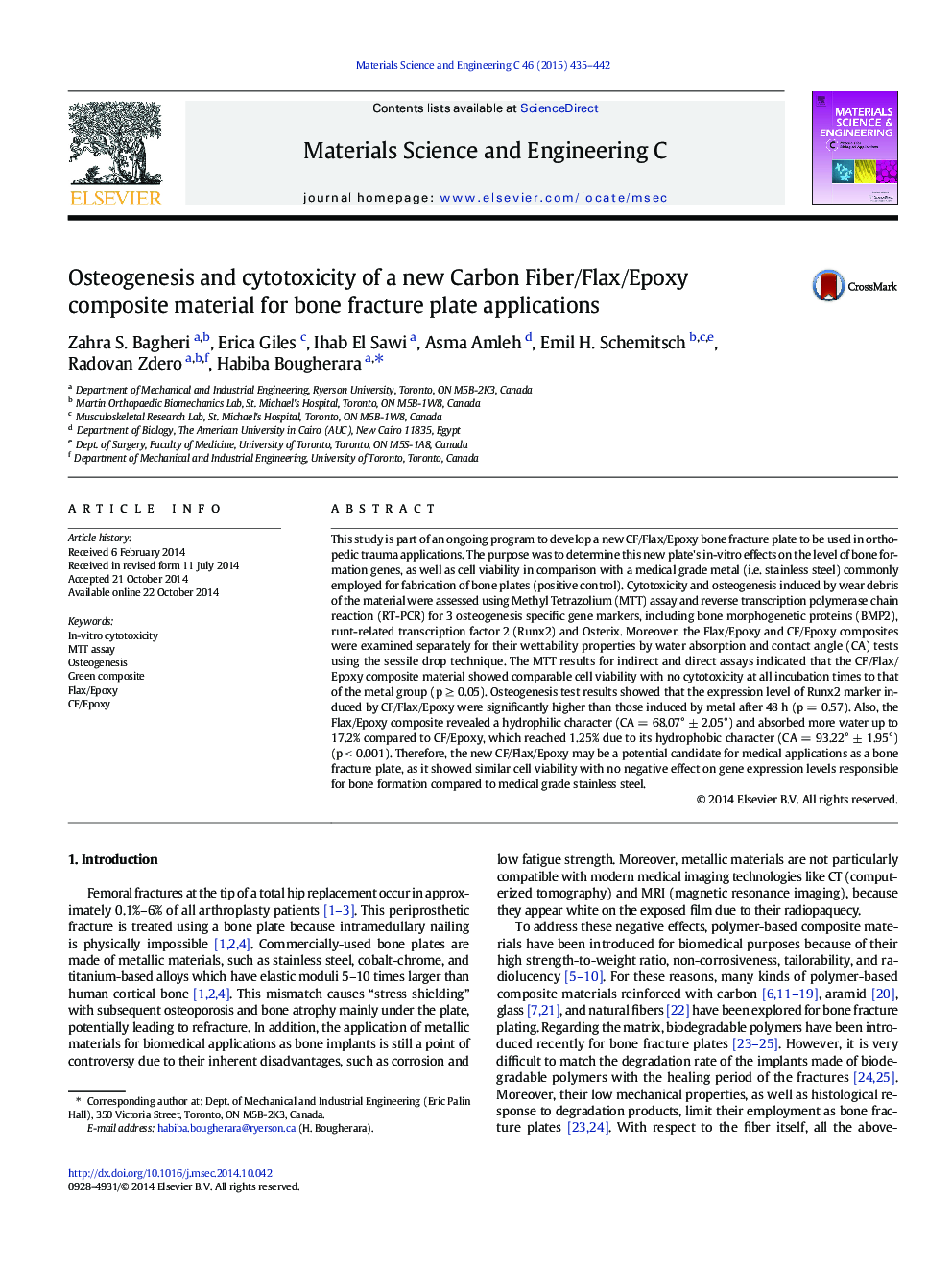| Article ID | Journal | Published Year | Pages | File Type |
|---|---|---|---|---|
| 7869877 | Materials Science and Engineering: C | 2015 | 8 Pages |
Abstract
This study is part of an ongoing program to develop a new CF/Flax/Epoxy bone fracture plate to be used in orthopedic trauma applications. The purpose was to determine this new plate's in-vitro effects on the level of bone formation genes, as well as cell viability in comparison with a medical grade metal (i.e. stainless steel) commonly employed for fabrication of bone plates (positive control). Cytotoxicity and osteogenesis induced by wear debris of the material were assessed using Methyl Tetrazolium (MTT) assay and reverse transcription polymerase chain reaction (RT-PCR) for 3 osteogenesis specific gene markers, including bone morphogenetic proteins (BMP2), runt-related transcription factor 2 (Runx2) and Osterix. Moreover, the Flax/Epoxy and CF/Epoxy composites were examined separately for their wettability properties by water absorption and contact angle (CA) tests using the sessile drop technique. The MTT results for indirect and direct assays indicated that the CF/Flax/Epoxy composite material showed comparable cell viability with no cytotoxicity at all incubation times to that of the metal group (p â¥Â 0.05). Osteogenesis test results showed that the expression level of Runx2 marker induced by CF/Flax/Epoxy were significantly higher than those induced by metal after 48 h (p = 0.57). Also, the Flax/Epoxy composite revealed a hydrophilic character (CA = 68.07° ± 2.05°) and absorbed more water up to 17.2% compared to CF/Epoxy, which reached 1.25% due to its hydrophobic character (CA = 93.22° ± 1.95°) (p < 0.001). Therefore, the new CF/Flax/Epoxy may be a potential candidate for medical applications as a bone fracture plate, as it showed similar cell viability with no negative effect on gene expression levels responsible for bone formation compared to medical grade stainless steel.
Keywords
Related Topics
Physical Sciences and Engineering
Materials Science
Biomaterials
Authors
Zahra S. Bagheri, Erica Giles, Ihab El Sawi, Asma Amleh, Emil H. Schemitsch, Radovan Zdero, Habiba Bougherara,
